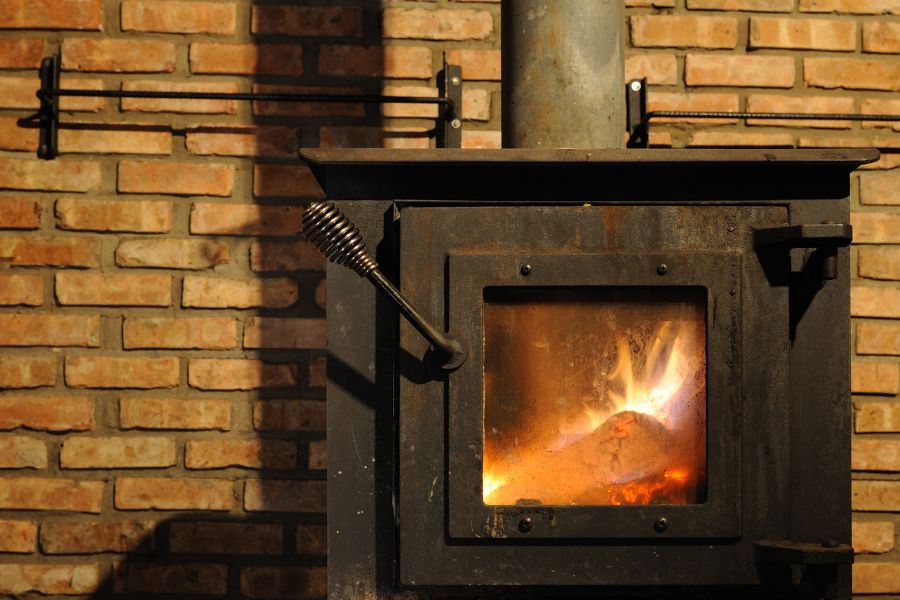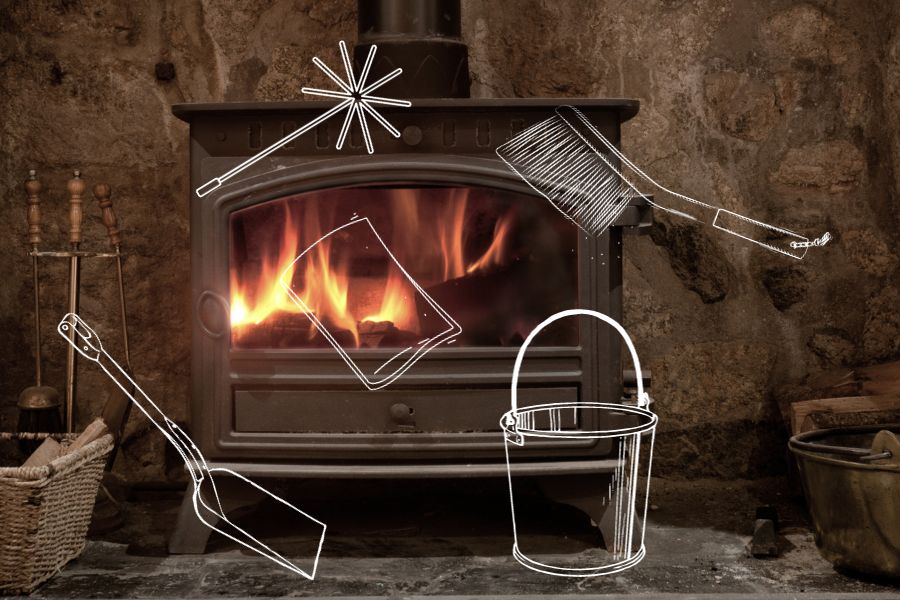Wood stoves are great for those cold winter months when you’d rather be nowhere than in front of a fire. They warm your home, look great inside and out, and are a cost and environmentally-friendly heat source.
However, the maintenance of the stove can be a concern for some people. Many who buy a stove aren’t sure how to clean a wood stove properly.
Just like everything else in the world, wood stoves require upkeep, cleaning, and even repairs. This is because they burn wood and operate at extremely high temperatures. Fortunately, with a little bit of help, you can maintain and clean your wood stove and keep it looking and working like new.
In the following paragraphs we’ll go over why you should clean your stove, how regularly, and a guide on how to completely clean it.
Why Do You Need to Clean Your Wood Stove?

A maintained and clean wood stove is an efficient stove. Not only will it look better when it shines, but it will also work better and more safely.
As mentioned above, wood stoves are subject to damaging conditions as a result of extreme heat and ash. The ash accumulates due to the wood burning and can spread to the air, polluting and dirtying the room. When the ash accumulates, it also can damage the interior of the stove if it is subjected to moisture. This causes rust and other damaging processes to take place that you want to avoid. Removing or limiting the ash to an inch of accumulation helps maintain airflow and efficiency while making operation safer.
You also want to ensure that any creosote is removed from the chimney flue. Creosote results from burning the wood, similar to ash. However, it accumulates on parts such as the chimney and is worse when there is poor airflow through the chimney. It can become hardened and cause a fire hazard because it is highly flammable, causing nearly 7% of home fires in the US. It goes without saying that this alone would be reason enough to clean your stove’s interior and flue regularly!
How Often to Clean Your Wood-Burning Stove
Although there is no steadfast rule for how often you should clean your wood stove, there is a guideline to follow.
Generally, the more often you use the stove determines how often the stove should be cleaned. Also, for example, you may not need to clean everything as much as you would need to clean the interior.
Wood Stove Exterior Cleaning Frequency
The exterior of the stove is likely the part that will need to be cleaned the least unless a rust problem occurs. Using wood stove polish or wood stove paint, you can resist rust for longer stretches of time and, therefore, do not need to clean it more than when you notice wear and tear.
If you see rust or surface damage, remove or fix it immediately to avoid further damage.
Wood Stove Interior Cleaning Frequency
The interior of the stove will likely require the most frequent cleaning because it is where the ash accumulates. Interior cleaning depends on how often it is used because burning wood often leads to more ash.
You should clean out the interior of your stove with an ash vacuum whenever the ash accumulates past an inch or two, or if it interferes with the grill.
Wood Stove Flue Cleaning Frequency
The flue is one of the most important parts to clean because it is the home of creosote accumulation. The more often you burn wood and the type of wood affects how quickly it accumulates.
You should regularly clean the flue 2-3 times per season. If it is off-season, then once or twice per season is fine as well.
Wood Stove Glass Cleaning Frequency
The glass is perhaps the most visually important piece of the stove. As you burn wood, the ash and other particles accumulate on the glass, making it harder to see the fire. You should clean the glass whenever it obstructs your view of the fire.
As you can see, the frequency of use is the best indicator of how often you need to clean your stove. Make sure to clean it regularly in order for it to operate at its best.
What Parts Do You Need to Clean?
Listed below are the primary parts requiring cleaning, as mentioned above, as well as how to go about cleaning them.
Make sure to protect your floors with newspaper or other coverings, and always ventilate the area when using paint or polish. It also goes without saying, but clean up afterward!
Exterior
- Ensuring the stove is cool to the touch, survey the exterior for any chips, cracks, or rust.
- If you find cracks or chips, fill them in with stove putty. Remove rust with a wire brush or rust remover if rust is found.
- Wet a towel or rag with warm water and soap or vinegar, then wipe down the stove.
- If needed, apply wood stove polish or paint with a towel or spray can to the exterior to restore its color and shine. Remove any excess and then heat the stove to harden the substance so that it applies.
Interior

- Get a metal container and metal scoop to remove the ash from the bottom of the stove. Note that the ash can other materials can still be hot even if the stove isn’t, so a fireproof container is vital!
- Ensuring the stove is cool, carefully scoop up the ash from the bottom and transfer it into the container. Leave 1-2″ of ash behind to act as an insulator, but ensure airflow is still possible.
- After ash is clear and disposed of, check for interior damage to ensure safe operation.
Chimney

- Get a wire brush or chimney brush that will allow you to reach the entirety of your chimney.
- Set up a refuse collector at the bottom of the chimney so debris will fall into it.
- If possible, go to the roof, remove the cover for the chimney, and vigorously brush the entirety until you no longer hear debris fall or the brushing gets smoother. Replace the cover and return to the stove to collect and dispose of the debris.
- Take apart the indoor part of the chimney, also known as a chimney connector. Now perform the same brushing to remove the creosote, collecting the debris again.
- Reassemble the chimney connector and dispose of the debris.
Glass
- Grab a piece of newspaper while the glass is still slightly warm but not hot to the touch. Wet it slightly, then dip it in the ash from the fire.
- Use this to wipe the accumulation off the glass. The acidic nature of the ash when wet cuts through the build-up and should be all you need. If that fails, warm water or glass cleaner can also work. Remember to apply some elbow grease!
- After wiping the accumulation off, wipe a final time with a wet paper towel. This will remove any residue from cleaners or to remove any leftovers.
Now you know why you need to keep your stove clean and how to accomplish that with a new look. We hope this will help you keep your wood stove in tip-top shape and keep you safe from fire hazards.
Best of luck, and remember: make sure the stove is cool before cleaning. No level of cleaning is worth burns!






